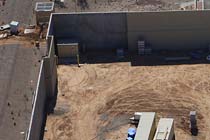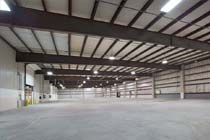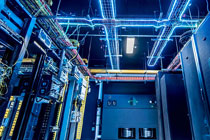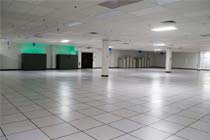Data Center Solutions Backup and Recovery
Colocation's Role In Enterprise Back-up and Recovery
Introduction
Backup and disaster recovery (BCDR) often take a backseat to revenue-driven and innovation-focused IT investments. However, as natural disasters and cybersecurity threats increase, the need for robust business continuity programs remains critical. Between 2022 and 2023, the United States experienced significant financial impacts from both natural disasters and cybersecurity threats. In 2022 the U.S. faced 18 separate billion-dollar weather and climate disasters, with total damages amounting to $165 billion. In 2023: There were 28 such disasters, with preliminary total costs estimated at $92.9 billion. While precise annual costs for cybersecurity threats in 2022 and 2023 are not easily pinpoint, the average cost of a data breach in the U.S. was reported at $9.36 million. These figures underscore the substantial economic burdens posed by both natural and cyber-related disasters in recent years and highlights the importance of reliable disaster recovery and business continuity solutions.
Why Colocation Is Still Relevant
Protecting non-cloud applications, not every application is headed to the cloud, even a decade after the launch of cloud computing and its impactful “as-a-service” delivery model. Legacy applications that can not be virtualized, home-grown business apps, highly sensitive/critical business apps, and numerous other use-cases show that there will always be a need for the “physical” data center whether it be in-house or out sourced to a colocation provider.

Compliance Drives Colocation-Based BCDR Deployments
Regulated organizations find themselves with very specific backup/disaster recovery requirements to address. Depending on the type of compliance/regulation, there maybea specific, mandatory distance between the production data center/s and the backup data center/s. Also, the state/location of the backup data center may be defined in specifics.GDPR, the Patriot Act, CCPA, and other legislation prevent specific types of data from being stored and/or transferred outside of a specific country.These examples point to a need for IT departments to be able to identify and document specifically where their data lives. For national and multi-national clouds with active: active load balancing, this may be difficult to accomplish and guarantee. For companies in EMEA, this is even more challenging with data boundaries in close proximity.Colocation is an ideal option for organizations needing to maintain 100% certainty of where data is stored and how it is treated.Remote companies leverage managed colocation for efficiency, not traveling or hiring full-time staff in every colocation market.
Colocation Puts BCDR Applications and Data Closer to the Cloud, Networks
As with production hybrid IT environments, colocation puts backup hardware and applications closer to the cloud with carrier and cloud-neutral access to the hyperscale platforms and tier 1 networks organizations use to deliver IT services.Direct connect options to clouds like AWS, Azure, IBM, Oracle, and Google Cloud ensure optimal performance and security when compared to accessing these resources via a public Internet connection. Having multiple carrier options under one roof also allow the network/telecom team the ability to drive down network costs through negotiation.
Mitigate Data Center Risk with Increased Colocation Transparency
With in-house hyperscale cloud data centers, it may be difficult to get the granular risk details you need due to disclosure limitations and other considerations. With colocation, it is common for organizations to issue highly complex RFPs to fill in any/all missing data.
By deploying BCDR hardware and applications in the right colocation facility, organization scan fully document risk mitigation for maximum resilience, reliability and audit-preparedness.

Risk Mitigation for Non-Nature-Based Disasters (Man-Made)
Colocation providers also must select locations with man-made disaster threats in mind. After 9/11, threats of terrorism on US soil became too real, affecting the business continuity of tens of thousands of businesses. An estimated18,000+ small businesses were destroyed, never to re-open due to the destruction.Physical layer security is core to the colocation value proposition with most facilities offering a wide range of security features designed to make unauthorized access as difficult aspossible. Just getting access to the parking lot of many data center campuses is a challenge with perimeter protection and security stations at street-level entry.If you get near the facility, there are numerous additional security layers to pass including mantraps, anti-tailgating turnstiles, biometric scanners as part of a three-factor access denial system, campus-wide CCTV, 24-hour on-site security personnel, access logs and other protection is put in place to ensure the hardware hosted on-site is never seen, let alone touched, by anyone other than authorized personnel.Colocation providers routinely deploy facilities outside of the highest-threat areas to further reduce the risk of terrorist or like activity, although In some cases, it is unavoidable because of customer demand for colocation capacity in close proximity to metro offices.

Documented Reliability Through Certified Data Center Redundancy
Continuing with the thread of data center transparency, by choosing a colocation provider, organizations can get under the hood and document the redundancy of a specific facility to ensure maximum reliability and uptime.Many colocation providers pay good money to third-party auditors to sign off on their actual design/redundancy to give uptime-sensitive customers more than just their words that itis built to last. Customers may receive full diagrams showing how power and network get to the site how/where power fails over along with specific SLAs associated with downtime.Uptime track record should also be documented and available upon request to show actual facility performance over time. In the event that a customer needs real-time access to BCDR assets at any given time, colocation is an ideal solution, as the likelihood of outages is known to the organization by way of the architecture/Tier (N+1 = 99.999% uptime design) and the actual uptime track record.
Conclusion
As stated earlier, the cloud is an excellent option. It is not all-encompassing at this game stage for backup and recovery of certain types of data and applications. As long as there is a need for “physical data centers,” colocation provides organizations with an ideal BCDR option. Summarizing the reasoning is as follows.







